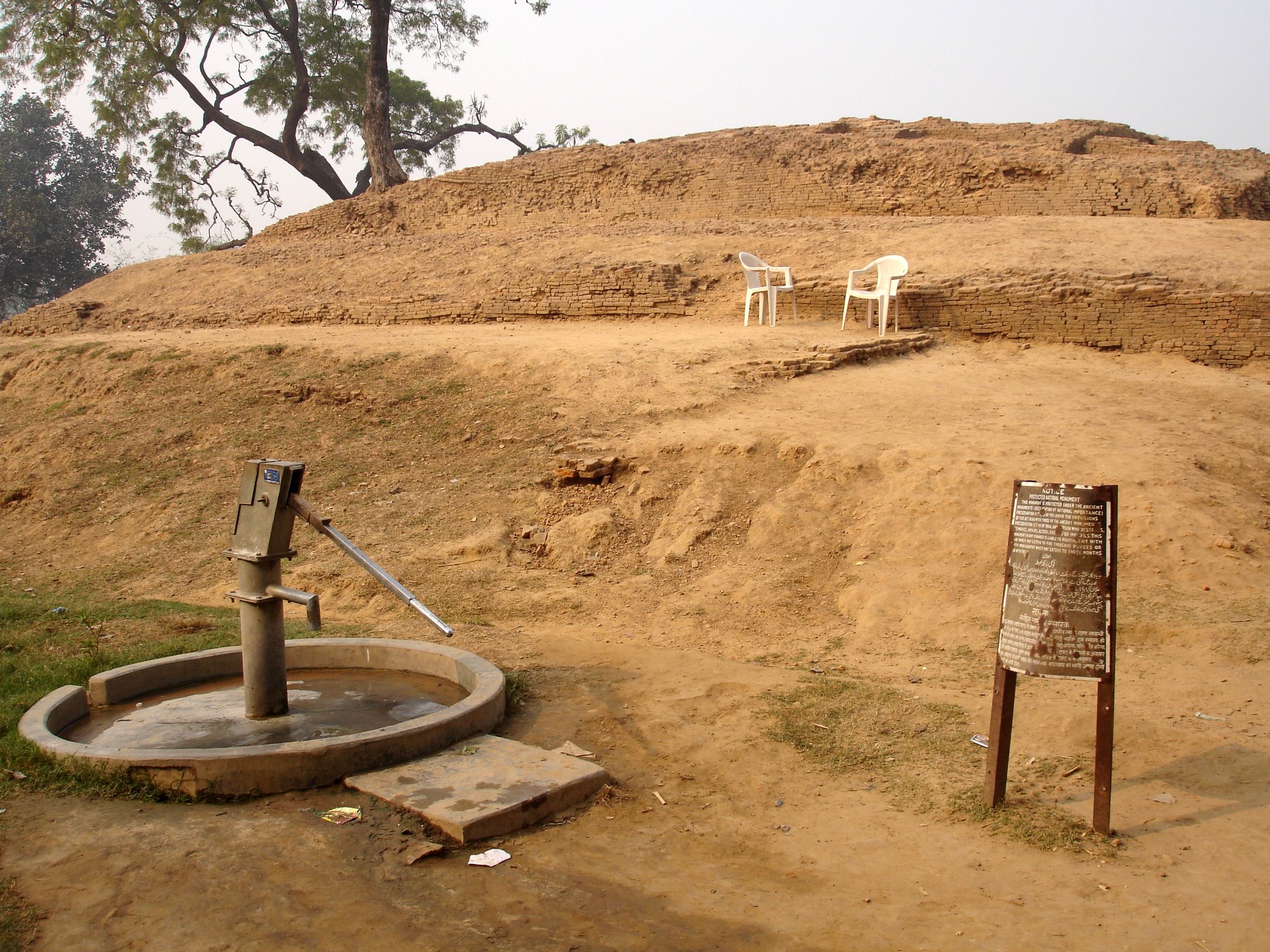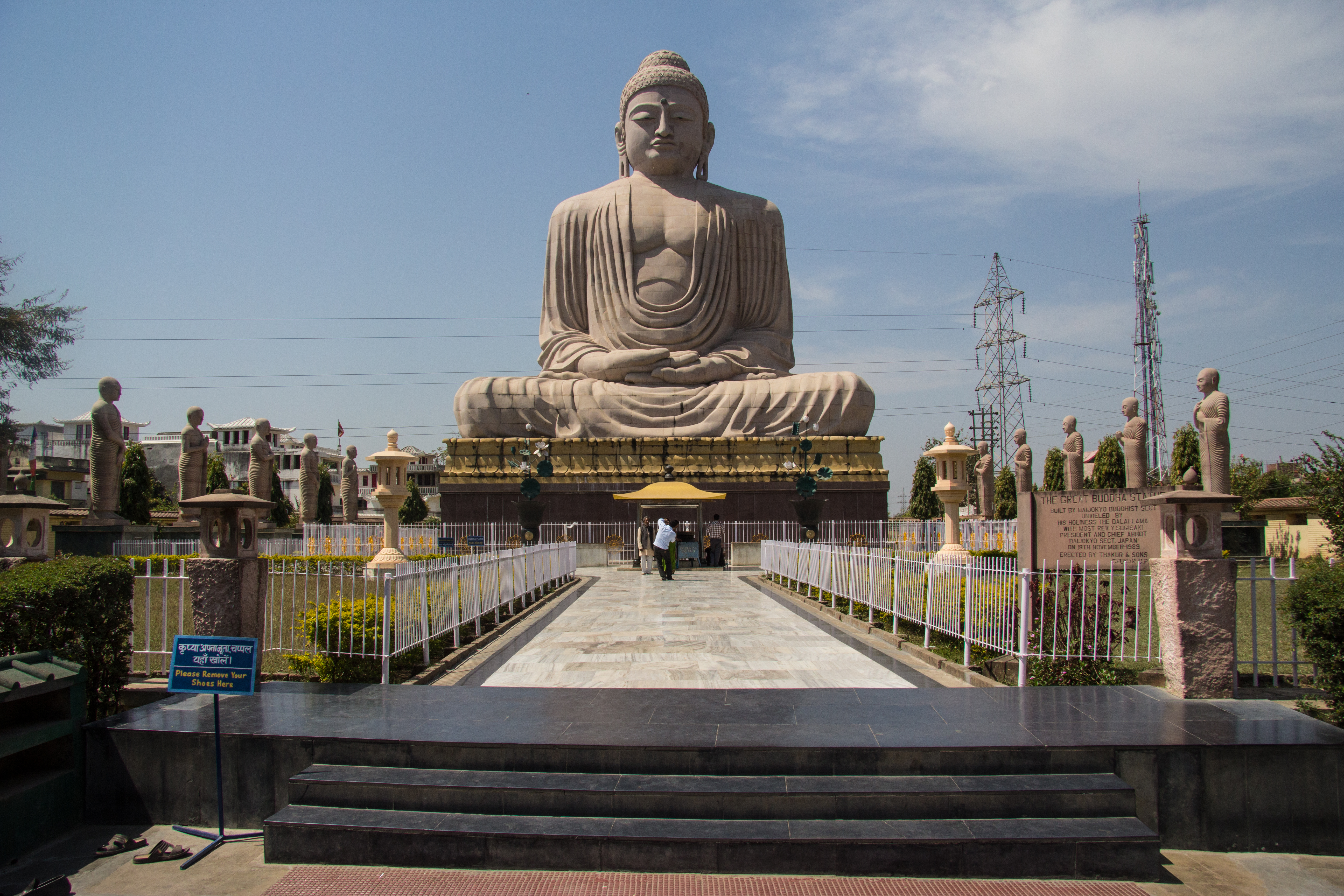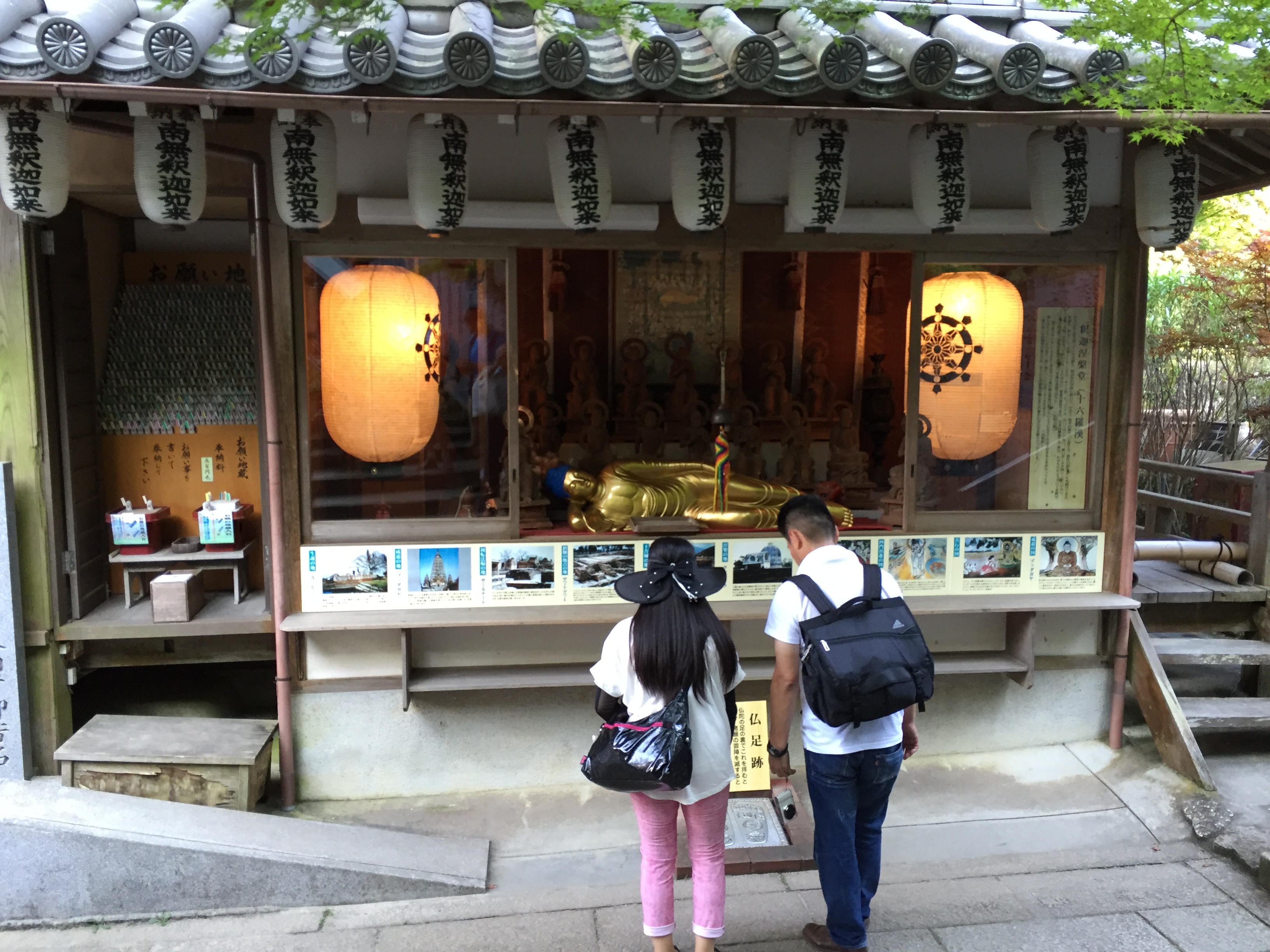|
Pāvā
Pāvā (now Fazilnagar) was an important city of the Malla tribe of ancient India at the time of the Haryanka dynasty of Magadha. It is located about southeast of Kushinagar in the state of Uttar Pradesh, India. Buddhist history When the Buddha reached his eightieth year, he felt that his time in this world was approaching an end. At that time, according to the ''Mahāparinibbāṇa Sutta'' ( Sutta 16 of the ''Dīgha Nikāya''), he and some of his disciples undertook a months-long journey that would take them from Rājagṛha, through Pāṭaliputta, Vesāli, Bhoganagara, and Pāvā, to their final destination at Kuśinagara. It was at Pāvā that Cunda, a resident of Pāvā, invited the group to a meal that featured a food called ''sukaramaddava''. This would prove to be the Buddha's last meal, as he was afflicted by a painful illness resembling dysentery soon after consuming the meal. It was on this occasion that the ''Cunda Sutta'' ( AN 6:46) was preached. At that t ... [...More Info...] [...Related Items...] OR: [Wikipedia] [Google] [Baidu] |
Malla (tribe)
Malla (Prakrit: ; pi, Malla; sa, मल्ल ) was an ancient Indo-Aryan tribe of north-eastern South Asia whose existence is attested during the Iron Age. The population of Malla, the Mallakas, were divided into two branches, each organised into a (an aristocratic oligarchic republic), presently referred to as the Malla Republics, which were part of the larger Vajjika League. Location The Mallakas lived in the region now covered by the Gorakhpur district in India, although their precise borders are yet to be determined. The Mallakas' neighbours to the east across the Sadānirā river were the Licchavikas, their neighbours to the west were the Sakyas, Koliyas, Moriyas, and Kauśalyas, the southern neighbours of the Mallakas were the Kālāmas and the Gaṅgā river, and the northern Mallaka borders were the Himālaya mountains. The territory of the Mallakas was a tract of land between the Vaidehas and the Kauśalyas. The territories of the two Malla republics we ... [...More Info...] [...Related Items...] OR: [Wikipedia] [Google] [Baidu] |
Cunda Kammāraputta
Cunda Kammāraputta was a smith who gave Gautama Buddha his last meal as an offering while he visited his mango grove in Pāvā on his way to Kuśīnagara. Shortly after having Cunda's meal, the Buddha suffered from fatal dysentery. The condition could have been Clostridial necrotizing enteritis due to a high protein (meat) diet, which is provided as bhikkha as a mark of respect for high ranking Bhikkus in Theravada. Before entering the parinirvāṇa, the Buddha told Ānanda to visit Cunda and tell him that his meal had nothing to do with his getting ill, and therefore should feel no blame nor remorse; on the contrary, offering the Tathāgata his last meal before passing away was of equal gain as of offering him his first meal before attaining buddhahood, and thus he should feel rejoice.Dīgha Nikāya II. 135f Name The name Kammāraputta (in Sanskrit, ''Karmāraputra'') means ''son of the smith''. In Chinese, his name is rendered as 準陀 (Zhǔntuó). Cunda as a lay fo ... [...More Info...] [...Related Items...] OR: [Wikipedia] [Google] [Baidu] |
Buddhist Pilgrimage Sites In India
In religion and spirituality, a pilgrimage is a long journey or search of great moral significance. Sometimes, it is a journey to a sacred place or to a shrine of importance to a person's beliefs and faith. Members of every major religion participate in pilgrimages. A person who makes such a journey is called a pilgrim. There are number of historical Buddhist pilgrimage sites in the Republic of India. Places associated with the life of Buddha Primary sites Buddhism offers four primary sites of pilgrimage: Lumbini (birthplace of the Buddha), Bodh Gaya (the site where the Buddha attained enlightenment), Sarnath (the location of the Buddha’s first sermon), and Kushinagar (the location where the Buddha attained parinirvana). All of these sites are located in India except Lumbini, which is located in southern Nepal. File:Exterior view of the Mahabodhi Temple.jpg, "Maha Bodhi Temple" at Bodh Gaya File:Dhamek Stupa, Sarnath.jpg, Dhamek Stupa, Sarnath File:Ancient Buddhist monaste ... [...More Info...] [...Related Items...] OR: [Wikipedia] [Google] [Baidu] |
Fazilnagar
Fazilnagar (also known as Pawanagar) is a community development block in the Kushinagar district of the state of Uttar Pradesh in India. It is located along National Highway 28 (India), NH 28, about southeast of Kushinagar International Airport. It is from Deoria, Uttar Pradesh, Deoria and east of Gorakhpur Airport. History At the time of the Haryanka dynasty of Magadha, this place was known as ''Pāvā'' As such, it was the capital city of one of the two Malla (tribe), Malla republics of History_of_India#Second_urbanisation_(c._600_%E2%80%93_200_BCE), ancient India (the capital of the other Malla republic was located at Kushinagar). According to the ''Mahāparinibbāṇa Sutta'' (Sutra, Sutta 16 of the ''Dīgha Nikāya''), Gautama Buddha visited this place during his final journey, as he traveled from Kesaria, Kesaputta (the capital of the Kālāma, Kālāma tribe) to Kushinagar. It was here, at Cunda Kammāraputta, Cunda's mango grove, where the Buddha ate what would be his ... [...More Info...] [...Related Items...] OR: [Wikipedia] [Google] [Baidu] |
Ancient Indian Cities
Ancient history is a time period from the beginning of writing and recorded human history to as far as late antiquity. The span of recorded history is roughly 5,000 years, beginning with the Sumerian cuneiform script. Ancient history covers all continents inhabited by humans in the period 3000 BCAD 500. The three-age system periodizes ancient history into the Stone Age, the Bronze Age, and the Iron Age, with recorded history generally considered to begin with the Bronze Age. The start and end of the three ages varies between world regions. In many regions the Bronze Age is generally considered to begin a few centuries prior to 3000 BC, while the end of the Iron Age varies from the early first millennium BC in some regions to the late first millennium AD in others. During the time period of ancient history, the world population was already exponentially increasing due to the Neolithic Revolution, which was in full progress. While in 10,000 BC, the world population stood a ... [...More Info...] [...Related Items...] OR: [Wikipedia] [Google] [Baidu] |
Mahavira
Mahavira (Sanskrit: महावीर) also known as Vardhaman, was the 24th ''tirthankara'' (supreme preacher) of Jainism. He was the spiritual successor of the 23rd ''tirthankara'' Parshvanatha. Mahavira was born in the early part of the 6th century BCE into a royal Kshatriya Jain family in ancient India. His mother's name was Trishala and his father's name was Siddhartha. They were lay devotees of Parshvanatha. Mahavira abandoned all worldly possessions at the age of about 30 and left home in pursuit of spiritual awakening, becoming an ascetic. Mahavira practiced intense meditation and severe austerities for twelve and a half years, after which he attained '' Kevala Jnana'' (omniscience). He preached for 30 years and attained Moksha (liberation) in the 6th century BCE, although the year varies by sect. Historically, Mahavira, who revived and preached Jainism in ancient India, was an older contemporary of Gautama Buddha. Jains celebrate ''Mahavir Janma Kalyanak'' every ye ... [...More Info...] [...Related Items...] OR: [Wikipedia] [Google] [Baidu] |
Jainism
Jainism ( ), also known as Jain Dharma, is an Indian religions, Indian religion. Jainism traces its spiritual ideas and history through the succession of twenty-four tirthankaras (supreme preachers of ''Dharma''), with the first in the current time cycle being Rishabhadeva, whom the tradition holds to have lived millions of years ago, the twenty-third ''tirthankara'' Parshvanatha, whom historians date to the 9th century BCE, and the twenty-fourth ''tirthankara'' Mahāvīra, Mahavira, around 600 BCE. Jainism is considered to be an eternal ''dharma'' with the ''tirthankaras'' guiding every time cycle of the Jain cosmology, cosmology. The three main pillars of Jainism are ''Ahimsa in Jainism, ahiṃsā'' (non-violence), ''anekāntavāda'' (non-absolutism), and ''aparigraha'' (asceticism). Jain monks, after positioning themselves in the sublime state of soul consciousness, take five main vows: ''ahiṃsā'' (non-violence), ''satya'' (truth), ''Achourya, asteya'' (not stealing), ''b ... [...More Info...] [...Related Items...] OR: [Wikipedia] [Google] [Baidu] |
Stupa
A stupa ( sa, स्तूप, lit=heap, ) is a mound-like or hemispherical structure containing relics (such as ''śarīra'' – typically the remains of Buddhist monks or nuns) that is used as a place of meditation. In Buddhism, circumambulation or ''pradakhshina'' has been an important ritual and devotional practice since the earliest times, and stupas always have a ''pradakhshina'' path around them. The original South Asian form is a large solid dome above a tholobate or drum with vertical sides, which usually sits on a square base. There is no access to the inside of the structure. In large stupas there may be walkways for circumambulation on top of the base as well as on the ground below it. Large stupas have or had ''vedikā'' railings outside the path around the base, often highly decorated with sculpture, especially at the torana gateways, of which there are usually four. At the top of the dome is a thin vertical element, with one of more horizontal discs spreadin ... [...More Info...] [...Related Items...] OR: [Wikipedia] [Google] [Baidu] |
Buddhist Sites In Uttar Pradesh
Buddhism ( , ), also known as Buddha Dharma and Dharmavinaya (), is an Indian religion or philosophical tradition based on teachings attributed to the Buddha. It originated in northern India as a -movement in the 5th century BCE, and gradually spread throughout much of Asia via the Silk Road. It is the world's fourth-largest religion, with over 520 million followers (Buddhists) who comprise seven percent of the global population. The Buddha taught the Middle Way, a path of spiritual development that avoids both extreme asceticism and hedonism. It aims at liberation from clinging and craving to things which are impermanent (), incapable of satisfying ('), and without a lasting essence (), ending the cycle of death and rebirth (). A summary of this path is expressed in the Noble Eightfold Path, a training of the mind with observance of Buddhist ethics and meditation. Other widely observed practices include: monasticism; "taking refuge" in the Buddha, the , and the ; and ... [...More Info...] [...Related Items...] OR: [Wikipedia] [Google] [Baidu] |
Cremation
Cremation is a method of Disposal of human corpses, final disposition of a Cadaver, dead body through Combustion, burning. Cremation may serve as a funeral or post-funeral rite and as an alternative to burial. In some countries, including India and Nepal, cremation on an Pyre, open-air pyre is an ancient tradition. Starting in the 19th century, cremation was introduced or reintroduced into other parts of the world. In modern times, cremation is commonly carried out with a Crematorium, closed furnace (cremator), at a crematorium. Cremation leaves behind an average of 2.4 kg (5.3 lbs) of remains known as "ashes" or "cremains". This is not all ash but includes unburnt fragments of bone mineral, which are commonly ground into powder. They do not constitute a health risk and may be buried, interred in a memorial site, retained by relatives or scattered in various ways. History Ancient Cremation dates from at least 17,000 years ago in the archaeological record, with the ... [...More Info...] [...Related Items...] OR: [Wikipedia] [Google] [Baidu] |
Parinirvana
In Buddhism, ''parinirvana'' (Sanskrit: '; Pali: ') is commonly used to refer to nirvana-after-death, which occurs upon the death of someone who has attained ''nirvana'' during their lifetime. It implies a release from '' '', karma and rebirth as well as the dissolution of the ''skandhas''. In some Mahāyāna scriptures, notably the ''Mahāyāna Mahāparinirvāṇa Sūtra'', ''parinirvāṇa'' is described as the realm of the eternal true Self of the Buddha. In the Buddha in art, the event is represented by a reclining Buddha figure, often surrounded by disciples. Nirvana after death In the Buddhist view, when ordinary people die, each person's unresolved karma passes on to a new birth instantaneously; and thus the karmic inheritance is reborn in one of the six realms of '' samsara''. However, when a person attains nirvana, they are liberated from karmic rebirth. When such a person dies, it is the end of the cycle of rebirth, the Samsara and the Karma. Contemporary scholar Ru ... [...More Info...] [...Related Items...] OR: [Wikipedia] [Google] [Baidu] |




.png)


